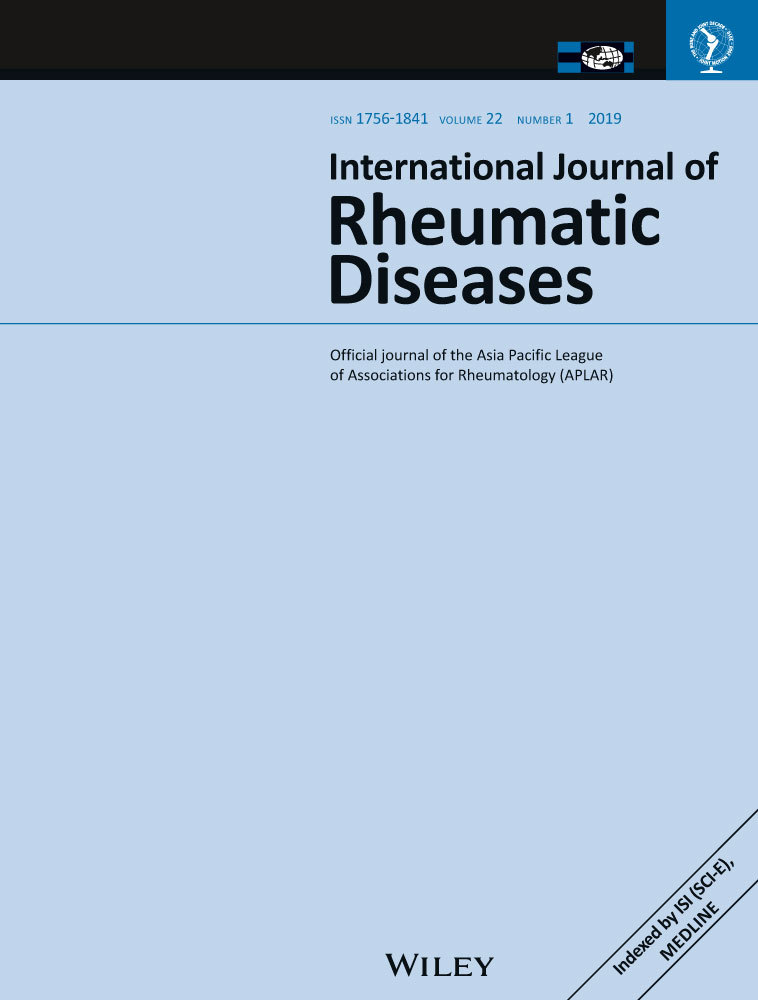Prevalence and predictive value of high-positive rheumatoid factor and anti-citrullinated protein antibody levels in nonarthritic patients with chronic hepatitis C infection
Funding information
This study was funded by Chang Gung Memorial Hospital Grant Award Number: CMRPG6A0311.
Abstract
Aim
In order to increase diagnostic sensitivity for early disease in rheumatoid arthritis (RA), new classification criteria were approved in 2010 by the American College of Rheumatology and the European League Against Rheumatism. One of the criteria, a high-positive rheumatoid factor (RF) or anti-citrullinated protein antibody (ACPA) level, was given a high score of 3. However, the increased prevalence of RF in patients with chronic hepatitis C virus (HCV) infection markedly diminishes the diagnostic specificity of serum RF for RA in these patients. There are no published data on the prevalence and predictive value of high-positive RF and ACPA; thus, we investigated high-positive RF and ACPA levels in nonarthritic patients with chronic HCV infection.
Method
Anti-citrullinated protein antibody and total RF were determined in serum from nonarthritic patients with chronic HCV infection (all had HCV RNA viremia).
Result
In 271 HCV-infected patients, positive RF, positive ACPA, high-positive RF, and high-positive ACPA were detectable in 47.2%, 1.1%, 8.9% and 1.1%, respectively. In these patients, fatty liver was an independent factor for high-positive RF.
Conclusion
In contrast to RF, ACPA is not increased in HCV infection. High-positive RF is not unusually present in nonarthritic patients with chronic HCV infection. ACPA may have improved value for the diagnosis of RA in this patient population. In patients with HCV infection, fatty liver may be a risk factor for high-positive RF.




